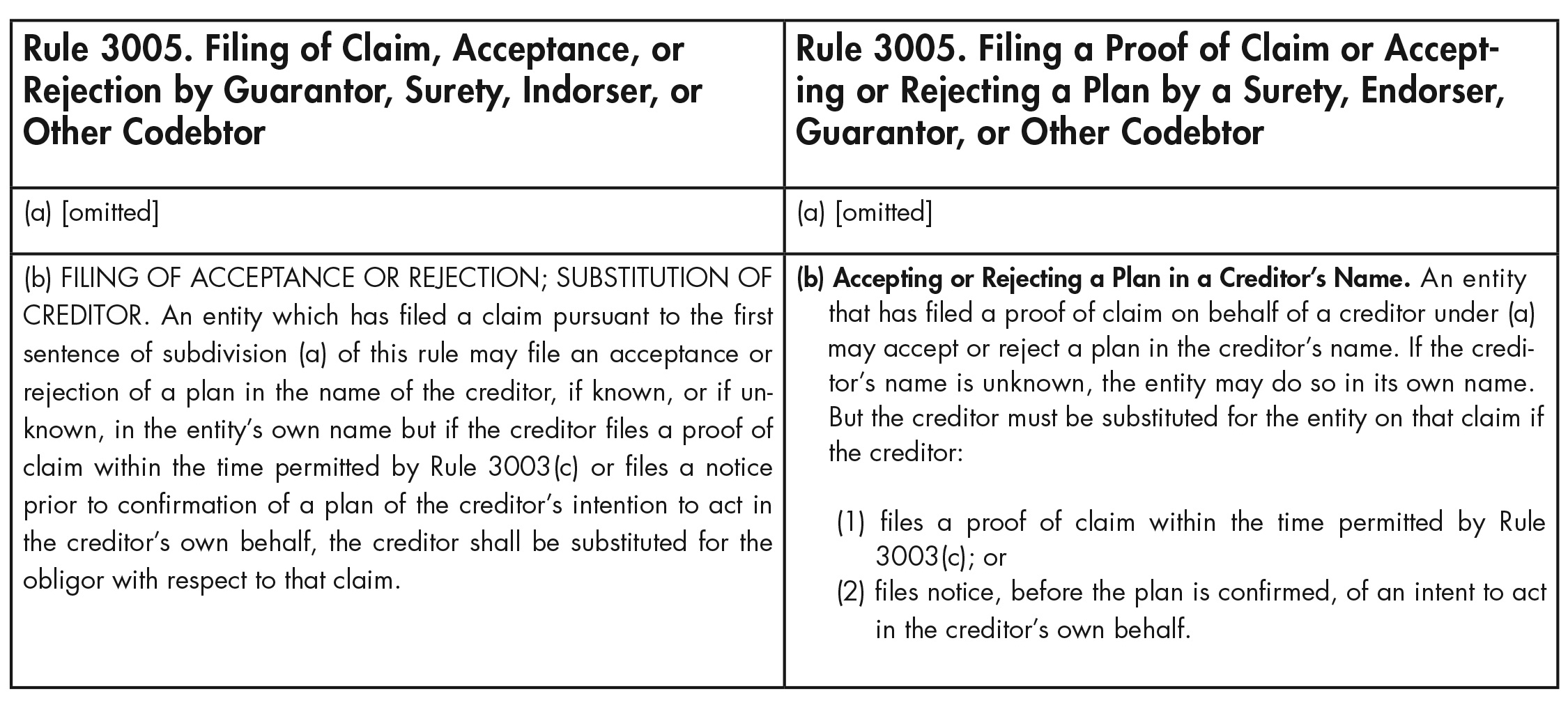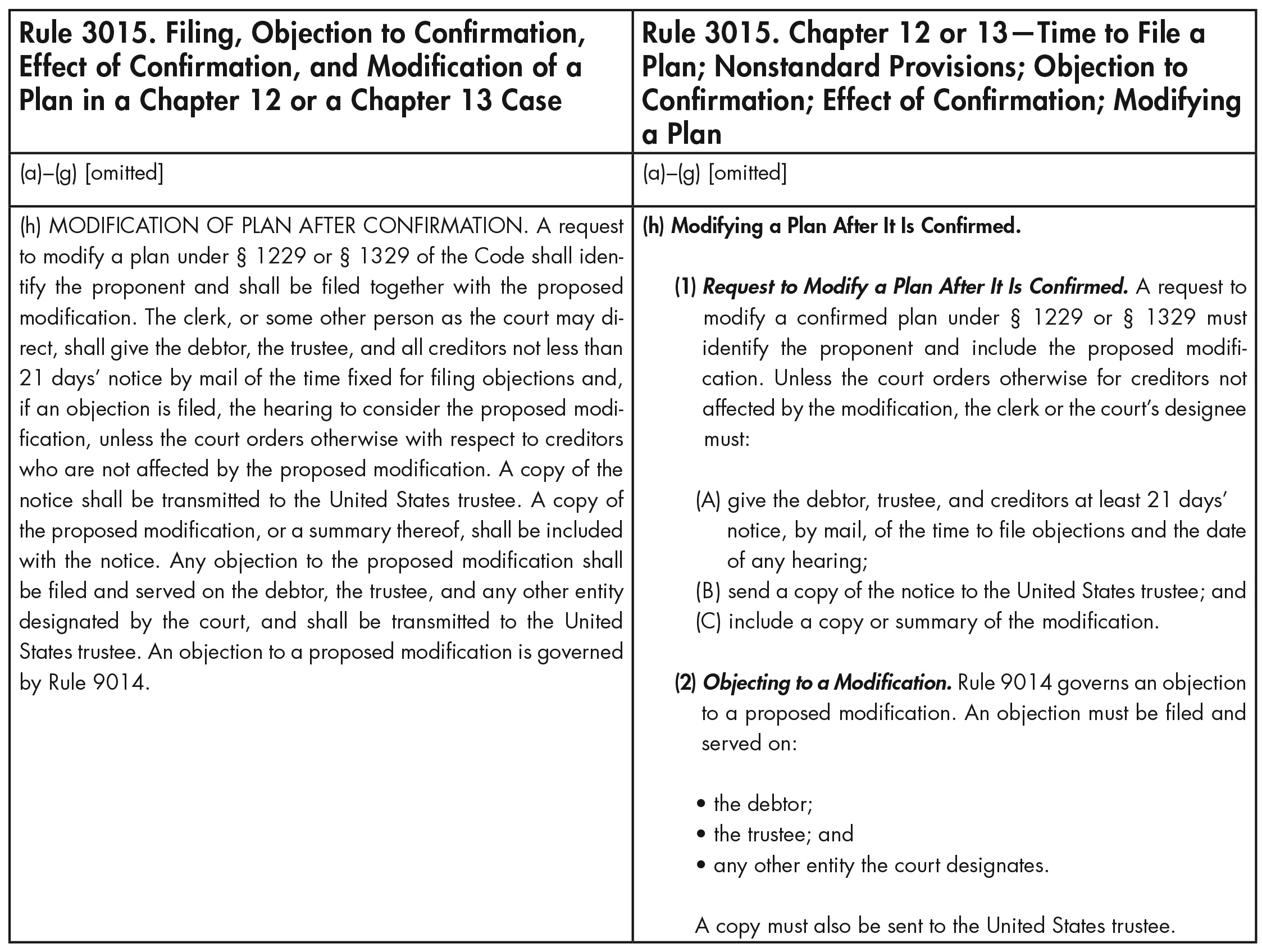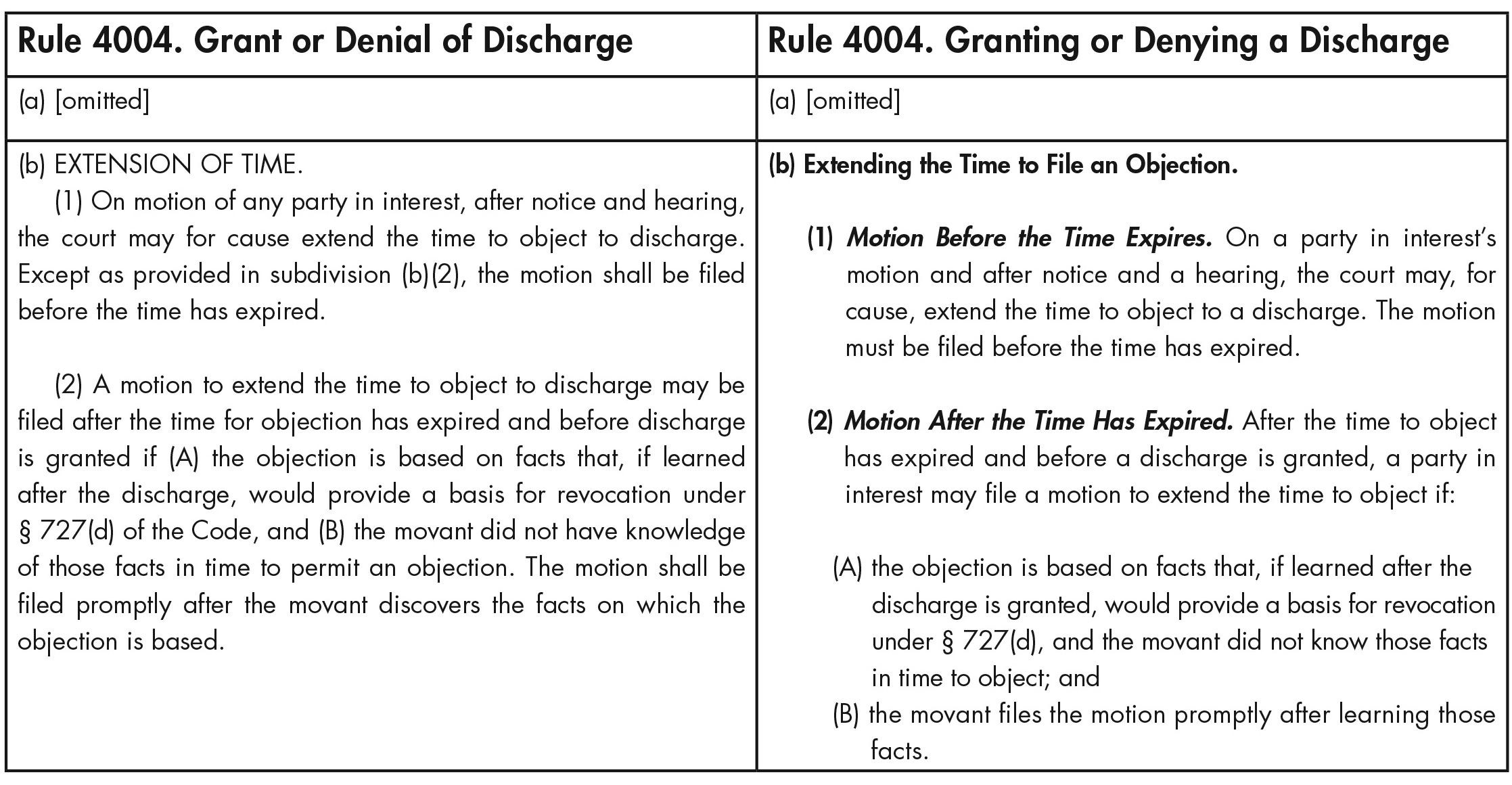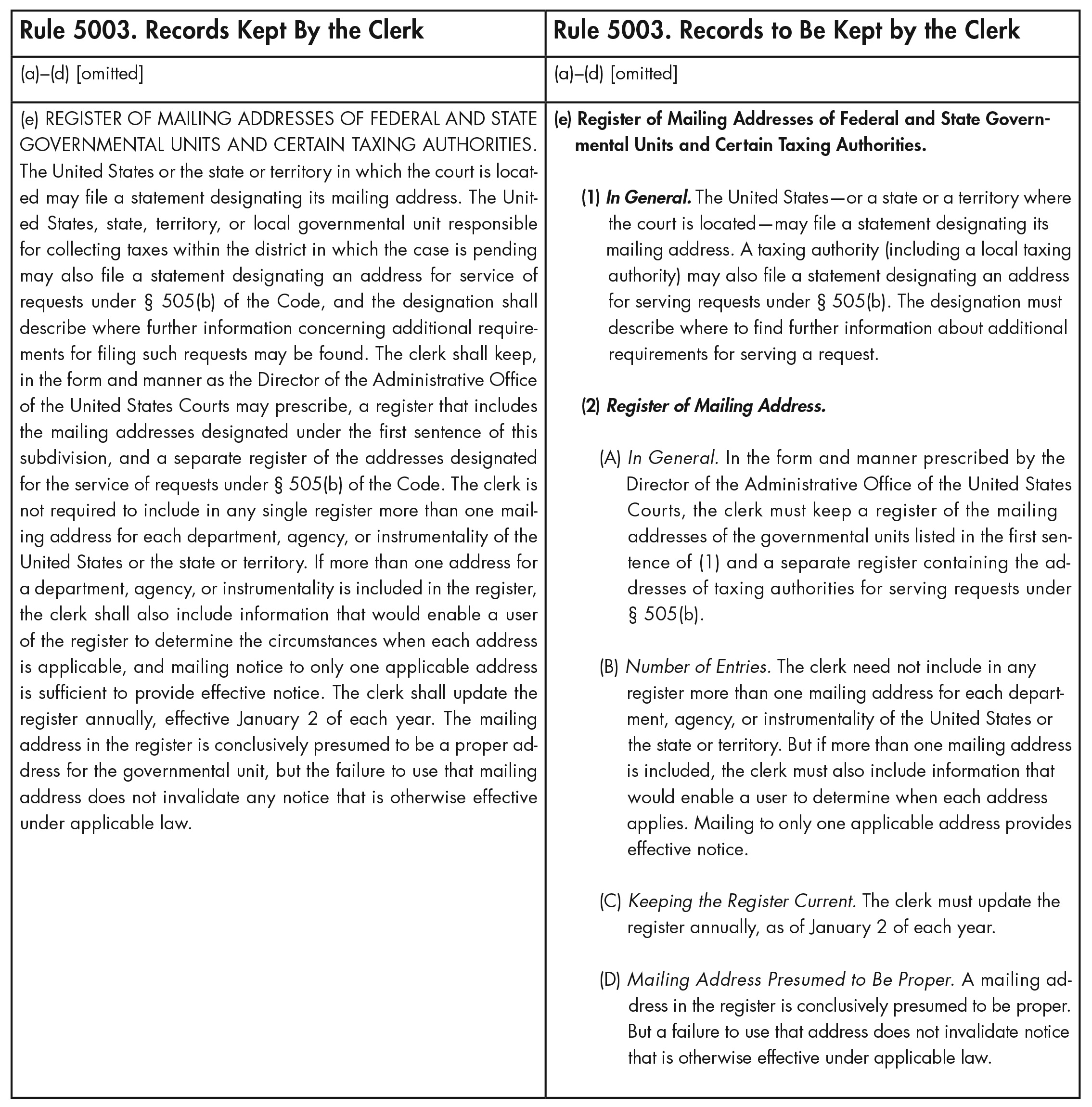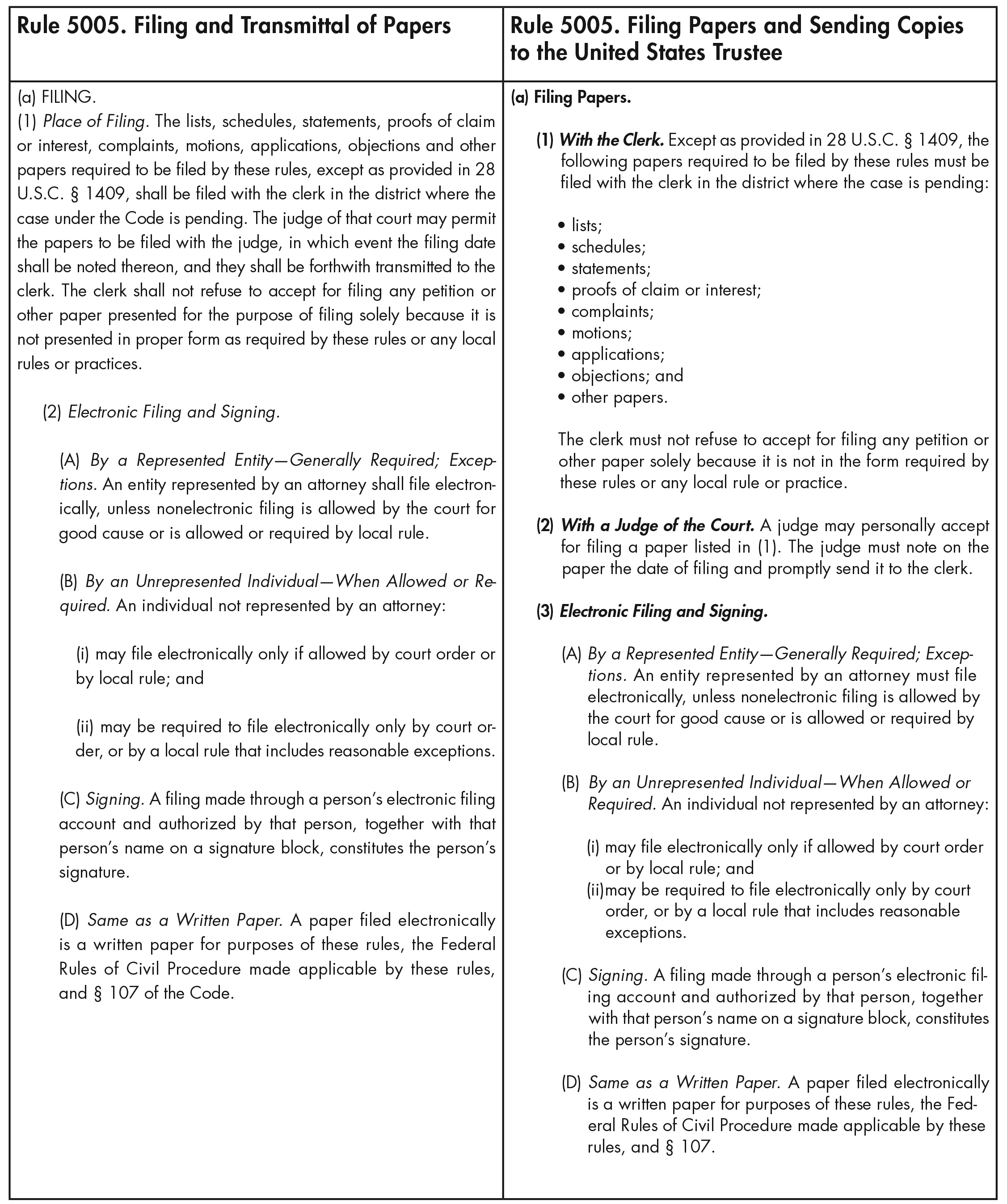
This column picks up where the November 2020 column left off. As I said then, for the last few years, the Advisory Committee on Bankruptcy Rules (within the Standing Committee on Federal Rules) has been at work “restyling” (redrafting) those rules for clarity, consistency, and readability. I’m one of three drafting consultants on the project, along with Bryan Garner and Joseph Spaniol.
In November 2020, I provided a group of examples from the 1000 and 2000 series. In August 2021, the 3000 through 6000 series were released for public comment1—hence this new group of examples.
This is the fifth and last set of federal rules to be redrafted over the last 20 years, following the appellate rules, criminal rules, civil rules, and evidence rules. The goal has always been to improve the rules without changing substantive meaning. Many experts and groups are reviewing the drafts to make sure that the substance isn’t changed. And you can judge the improvements for yourself.
If you compare the wording, you should generally find more logical organization, shorter sentences, better sentence structure, the omission of unnecessary words, and so on. Individual changes may seem trivial, but they add up to a considerable gain in clarity.
Even if you don’t carefully compare the wording, just notice what a difference it makes to use more subparts, headings, and vertical lists.2 They may make the rules look longer, but their text is invariably shorter. These are the kinds of changes that lawyers should be able to make in any of their documents—without great difficulty and to the readers’ great benefit

